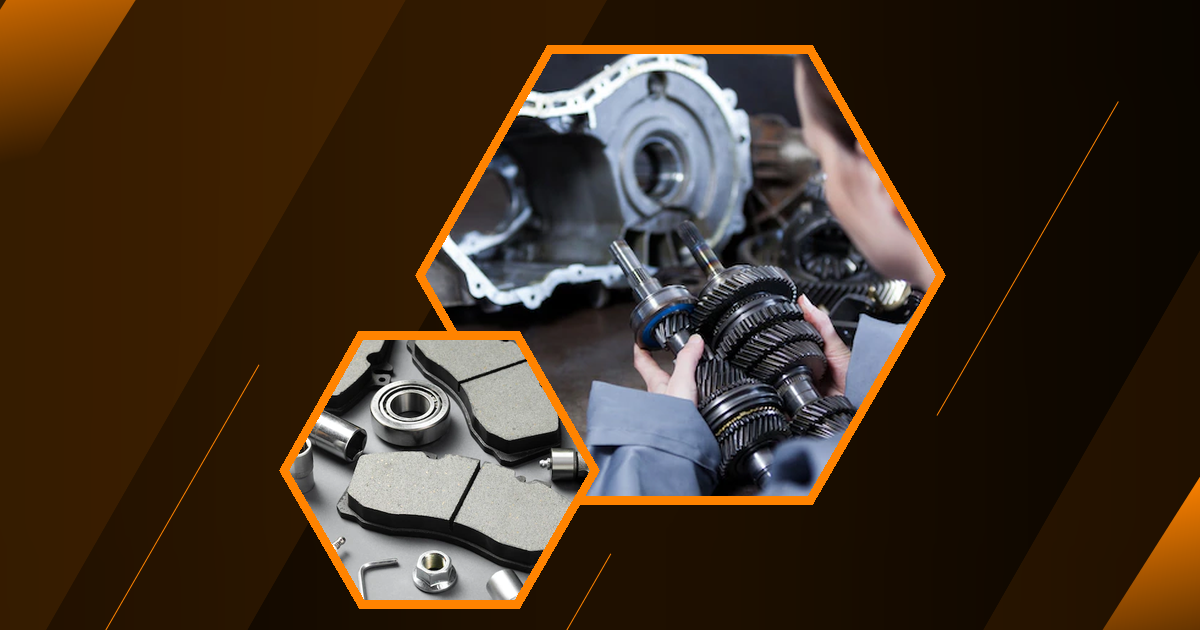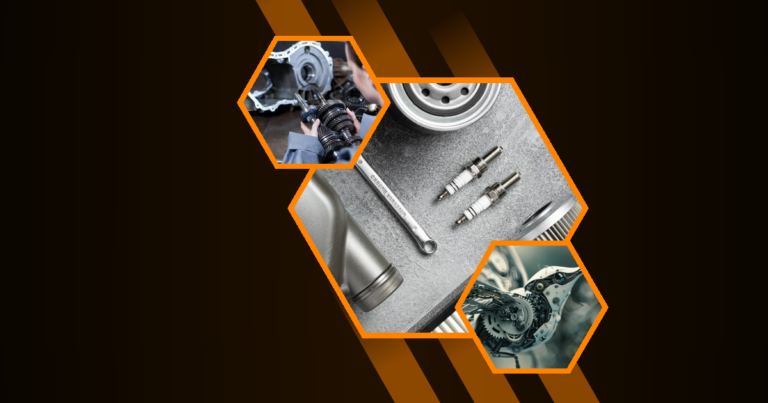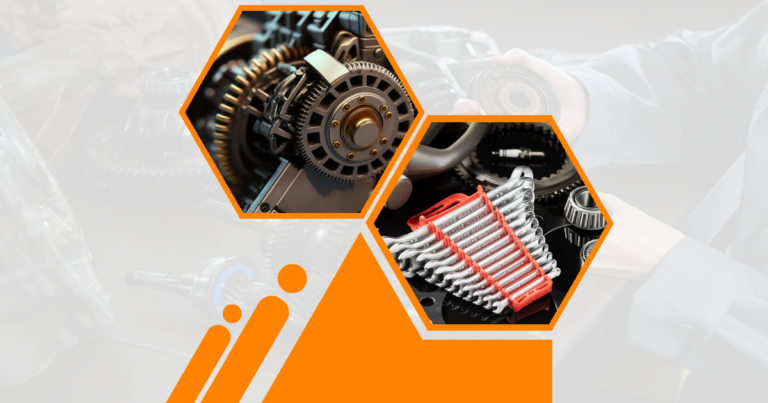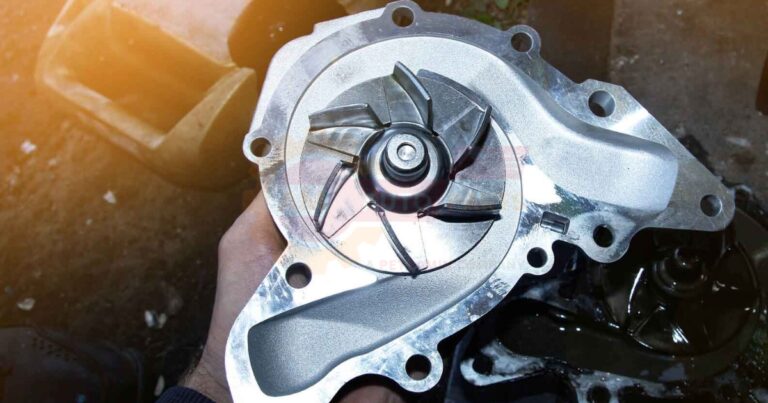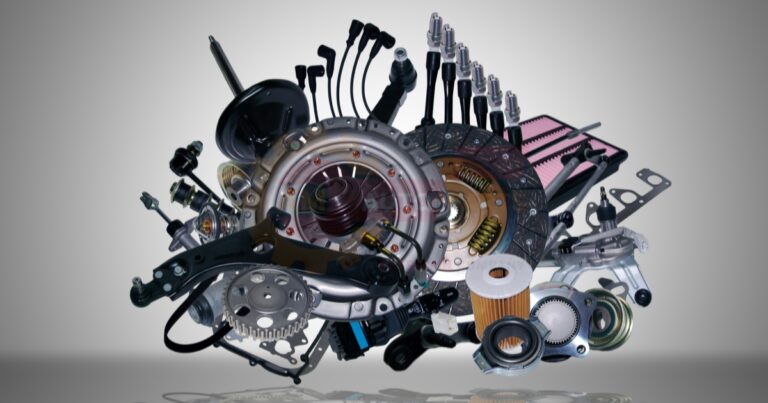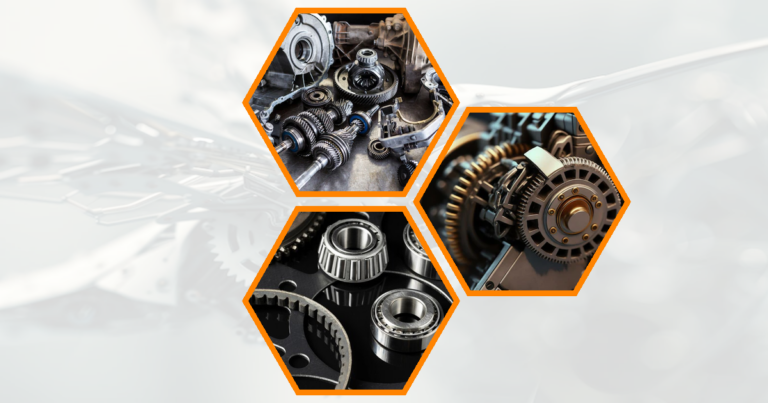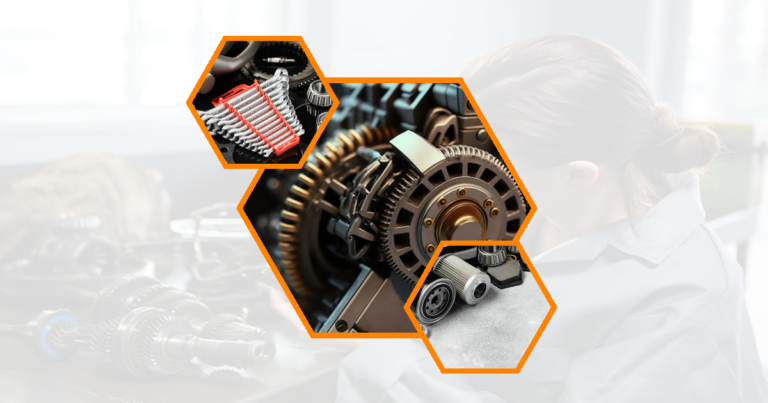The automotive aftermarket is a dynamic sector, constantly evolving with new technologies and consumer demands. As the industry grows, businesses must adopt innovative growth strategies and explore market expansion opportunities to stay competitive. This article delves into the key areas driving growth in the automotive aftermarket, offering insights into how businesses can capitalize on these trends.
Shifting Business Models and Disruptive Technologies in the Automotive Aftermarket
The automotive aftermarket is undergoing a transformation, driven by shifting business models and disruptive technologies. Companies are rethinking traditional approaches to meet the changing needs of consumers and leverage new technological advancements.
Impact of E-commerce on Aftermarket Distribution
E-commerce has revolutionized the way automotive aftermarket products are distributed. Online platforms offer consumers a convenient way to purchase parts and accessories, leading to increased sales and market reach. Businesses that embrace e-commerce can tap into a broader customer base and streamline their distribution processes.
- E-commerce sales in the automotive aftermarket are expected to grow by 14% annually through 2023.
- Online platforms provide a cost-effective way to reach global markets.
- Digital marketing strategies can enhance brand visibility and customer engagement.
Connected Car Technologies and Telematics
Connected car technologies and telematics are reshaping the automotive aftermarket landscape. These innovations enable real-time data collection and analysis, offering opportunities for personalized services and predictive maintenance.
- Telematics systems provide valuable insights into vehicle performance and driver behavior.
- Connected car services are forecasted to grow to 66 billion by 2025.
- Businesses can develop new service offerings based on telematics data.
Electric Vehicle Adoption and Aftermarket Implications
The rise of electric vehicles (EVs) presents both challenges and opportunities for the automotive aftermarket. As EV adoption increases, businesses must adapt their product lines and services to cater to this growing market segment.
- EVs require specialized parts and maintenance services.
- The shift to EVs may reduce demand for traditional internal combustion engine components.
- Companies can explore partnerships with EV manufacturers to expand their offerings.
Key Growth Strategies for Automotive Aftermarket Businesses
To thrive in the competitive automotive aftermarket, businesses must implement effective growth strategies. These strategies focus on expanding product lines, optimizing inventory, and enhancing customer experiences.
Expanding Product Lines and Services
Diversifying product lines and services is a crucial growth strategy for automotive aftermarket businesses. By offering a wider range of products, companies can attract new customers and increase sales.
- Introduce new product categories to meet emerging consumer needs.
- Offer value-added services such as installation and maintenance.
- Collaborate with suppliers to develop exclusive product offerings.
Leveraging Data Analytics for Inventory Optimization
Data analytics plays a vital role in optimizing inventory management. By analyzing sales trends and customer preferences, businesses can ensure they have the right products in stock at the right time.
- Use predictive analytics to forecast demand and reduce stockouts.
- Implement automated inventory management systems for efficiency.
- Analyze customer data to identify popular products and adjust inventory accordingly.
Developing Omnichannel Customer Experiences
Creating seamless omnichannel customer experiences is essential for retaining and attracting customers. By integrating online and offline channels, businesses can provide a consistent and convenient shopping experience.
- Develop a user-friendly website and mobile app for online shopping.
- Offer in-store pickup and delivery options for added convenience.
- Use customer feedback to improve the shopping experience across all channels.
Market Expansion Opportunities in the Global Automotive Aftermarket
The global automotive aftermarket offers numerous opportunities for market expansion. Businesses can explore emerging markets, engage in mergers and acquisitions, and form strategic partnerships to grow their presence.
Emerging Markets in Asia and Latin America
Emerging markets in Asia and Latin America present significant growth opportunities for the automotive aftermarket. These regions are experiencing rapid economic growth and increasing vehicle ownership, driving demand for aftermarket products.
- Focus on countries with growing automotive industries, such as China and India.
- Adapt products and marketing strategies to local consumer preferences.
- Establish distribution networks to reach new customers in these regions.
Consolidation and M&A Activity
Consolidation and mergers and acquisitions (M&A) are common strategies for achieving market expansion. By acquiring or merging with other companies, businesses can increase their market share and access new resources.
- Identify potential acquisition targets with complementary products or services.
- Leverage synergies to improve operational efficiency and reduce costs.
- Use M&A to enter new geographic markets or product segments.
Partnerships with OEMs and Tech Companies
Forming partnerships with original equipment manufacturers (OEMs) and technology companies can drive innovation and market expansion. These collaborations can lead to the development of new products and services that meet evolving consumer needs.
- Collaborate with OEMs to create aftermarket parts for new vehicle models.
- Partner with tech companies to integrate advanced technologies into products.
- Explore joint ventures to share resources and expertise.
Challenges and Opportunities in Aftermarket Telematics
Telematics offers both challenges and opportunities for the automotive aftermarket. Businesses must address data privacy concerns while leveraging telematics for predictive maintenance and smart city integration.
Data Privacy and Cybersecurity Concerns
Data privacy and cybersecurity are critical issues in the telematics space. As vehicles become more connected, businesses must ensure that customer data is protected from unauthorized access.
- Implement robust cybersecurity measures to safeguard data.
- Comply with data protection regulations to build customer trust.
- Educate customers about data privacy and security practices.
Predictive Maintenance and Remote Diagnostics
Predictive maintenance and remote diagnostics are key opportunities in the telematics sector. These technologies enable businesses to offer proactive maintenance services, reducing downtime and improving vehicle performance.
- Use telematics data to predict maintenance needs and schedule services.
- Offer remote diagnostics to identify and resolve issues quickly.
- Develop subscription-based maintenance plans for recurring revenue.
Integration with Smart City Infrastructure
Integrating telematics with smart city infrastructure can enhance the functionality of connected vehicles. This integration offers opportunities for businesses to develop new services and improve urban mobility.
- Collaborate with city planners to integrate telematics into smart city projects.
- Develop solutions for traffic management and congestion reduction.
- Explore opportunities for vehicle-to-infrastructure communication.
Sustainable Growth Strategies for Automotive Parts Distributors
Sustainability is becoming increasingly important in the automotive aftermarket. Businesses can adopt eco-friendly practices and circular economy initiatives to achieve sustainable growth.
Eco-friendly Product Offerings
Offering eco-friendly products is a key strategy for attracting environmentally conscious consumers. By focusing on sustainability, businesses can differentiate themselves and appeal to a growing market segment.
- Develop products made from recycled or sustainable materials.
- Promote energy-efficient parts and accessories.
- Highlight the environmental benefits of eco-friendly products in marketing efforts.
Circular Economy Initiatives
Circular economy initiatives focus on reducing waste and maximizing resource efficiency. By implementing these practices, businesses can contribute to sustainability and reduce costs.
- Implement recycling programs for used parts and materials.
- Explore remanufacturing opportunities to extend product life cycles.
- Collaborate with suppliers to develop sustainable supply chains.
Supply Chain Optimization
Optimizing the supply chain is essential for achieving sustainable growth. By improving efficiency and reducing waste, businesses can enhance their competitiveness and profitability.
- Use data analytics to identify inefficiencies and optimize logistics.
- Implement just-in-time inventory management to reduce excess stock.
- Collaborate with suppliers to improve sustainability across the supply chain.
Digital Transformation in Automotive Aftermarket Operations
Digital transformation is reshaping the automotive aftermarket, offering new opportunities for efficiency and innovation. Businesses can leverage AI, augmented reality, and blockchain to enhance operations.
AI-powered Inventory Management
AI-powered inventory management systems can improve accuracy and efficiency. By automating processes and analyzing data, businesses can optimize inventory levels and reduce costs.
- Use AI algorithms to forecast demand and adjust inventory accordingly.
- Implement automated reordering systems to prevent stockouts.
- Analyze sales data to identify trends and optimize product offerings.
Augmented Reality for Technical Support
Augmented reality (AR) offers innovative solutions for technical support and training. By using AR, businesses can enhance customer service and improve technician efficiency.
- Develop AR applications for remote troubleshooting and repair guidance.
- Use AR for training technicians on complex procedures.
- Offer AR-based customer support to improve satisfaction and loyalty.
Blockchain for Supply Chain Transparency
Blockchain technology can enhance supply chain transparency and traceability. By using blockchain, businesses can improve trust and accountability in their operations. Optimize auto parts inventory helps car shops keep the right amount of parts on hand This way they don’t run out of parts or have too many taking up space Supply chain fortification makes businesses stronger by protecting how they get and move products
Automotive ecommerce evolution Car shopping has moved from dealerships to online websites where people can now buy vehicles from their homes Steering mechanism control helps drivers turn their vehicles It allows cars and other vehicles to change direction smoothly
Automotive fraud prevention helps stop people from cheating when buying or selling cars It protects both buyers and sellers from tricks and scams in the car business Crankshaft camshaft differentiation A crankshaft turns the up-and-down motion of pistons into spinning motion while a camshaft controls the opening and closing of engine valves
Automotive camshaft mechanism The Vibration dampening mechanism helps reduce shaking and noise in machines and vehicles It makes things run smoother and quieter by absorbing unwanted movement
Brake components compared Different parts of brakes are looked at side by side to see how they work and which ones are better for different types of cars and driving needs
- Implement blockchain to track the origin and movement of parts.
- Use smart contracts to automate transactions and reduce fraud.
- Enhance supply chain visibility to improve decision-making and efficiency.
Future Trends Shaping the Automotive Aftermarket Landscape
The automotive aftermarket is poised for significant changes, driven by emerging trends such as 3D printing, autonomous vehicles, and subscription-based services.
3D Printing and On-demand Manufacturing
3D printing offers new possibilities for on-demand manufacturing in the automotive aftermarket. This technology enables businesses to produce parts quickly and cost-effectively.
- Use 3D printing to create custom parts and prototypes.
- Reduce lead times and inventory costs with on-demand production.
- Explore opportunities for personalized and niche products.
Autonomous Vehicle Maintenance
The rise of autonomous vehicles presents new challenges and opportunities for the aftermarket. Businesses must develop specialized services and products to support these vehicles.
- Offer maintenance and repair services for autonomous vehicle systems.
- Develop products that enhance the safety and performance of autonomous vehicles.
- Collaborate with autonomous vehicle manufacturers to create aftermarket solutions.
Subscription-based Service Models
Subscription-based service models are gaining popularity in the automotive aftermarket. These models offer recurring revenue and enhance customer loyalty.
- Develop subscription plans for maintenance and repair services.
- Offer bundled services and products for added value.
- Use data analytics to personalize subscription offerings and improve customer retention.
FAQs
What are the main drivers of growth in the automotive aftermarket industry?
The main drivers of growth in the automotive aftermarket industry include technological advancements, increasing vehicle ownership, and changing consumer preferences. Innovations such as connected car technologies and e-commerce platforms are reshaping the market. Additionally, the rise of electric and autonomous vehicles is creating new opportunities for aftermarket businesses.
How can aftermarket businesses adapt to changing consumer preferences?
Aftermarket businesses can adapt to changing consumer preferences by offering personalized and convenient services. Embracing digital transformation and omnichannel strategies can enhance customer experiences. Additionally, businesses should focus on sustainability and eco-friendly products to appeal to environmentally conscious consumers.
What impact will electric vehicles have on the traditional aftermarket?
Electric vehicles (EVs) will have a significant impact on the traditional aftermarket by changing the demand for certain parts and services. As EVs require fewer moving parts, the demand for traditional components may decrease. However, there will be opportunities for businesses to offer specialized EV parts and maintenance services.
How are automotive aftermarket companies leveraging e-commerce platforms?
Automotive aftermarket companies are leveraging e-commerce platforms to reach a wider audience and streamline distribution. Online sales channels provide convenience for consumers and allow businesses to expand their market reach. By using digital marketing strategies, companies can enhance brand visibility and customer engagement.
